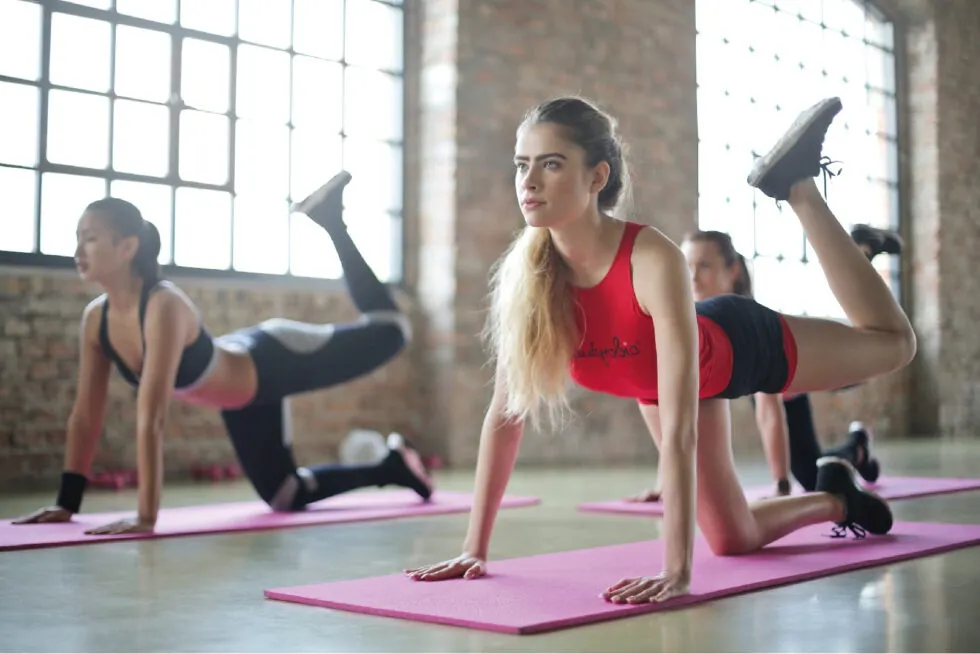Pilates for Strong Legs

Pilates was originally developed by Joseph Pilates to help with the rehabilitation of injuries in the early 20th Century. These days, Pilates is a strength exercise with benefits including flexibility, posture, balance, and physiotherapy. It’s also a good option for those wanting to target specific muscle groups such as the legs. Keep reading to learn more about Pilates for strong legs.
How Pilates builds strong legs
Pilates is a versatile exercise that can be either a gentle strength program for beginners and those requiring rehabilitation, or can be modified by advanced practitioners to target specific muscle groups such as the legs.
Pilates moves for legs can be broken down to target specific areas as intentional strength training, however general pilates moves rely on the limbs for control, increasing strength in these areas as a result.
Why we need strong legs
Strong legs are incredibly important for even the most simple daily activities such as standing and walking. But there are a number of other benefits to having strong legs, including:
Quality of life
Strengthening your legs will help with many activities that you do every day, such as sitting down and standing up from a chair, picking things up, and walking up stairs. It can also increase your overall balance. For those who participate in sports, strengthening your legs with Pilates exercises will help with activities such as jumping, running, and other powerful movements that affect your performance.
Strength training burns more calories
Some of the largest muscles in the body are in your legs, including your gluteus maximus (buttocks), quadriceps (front of your thigh) and your hamstrings (back of your thigh). The larger the muscle is, the more blood and oxygen is needed to fuel them during exercise. These muscles are also located further from your heart than the muscles in your upper body, so your heart has to work harder. Pilates leg moves isolates and strengthens your muscles whilst simultaneously burning off lots of calories.
Correct muscle imbalances and aid injury recovery
Adding Pilates exercises to your routine allows you to focus on muscle groups that often go underworked. Strengthening these muscles can help you to prevent muscle imbalances, or correct existing imbalances and injuries with movements that counteract the affected area.
Boost your cardio performance
By focusing on cardio only, you could be neglecting entire muscles. Incorporating Pilates strength training exercises into your routine will not only provide you with the benefits mentioned above, but will boost your ability to perform cardio exercises such as running, cycling, and dancing.
Helping with arthritis
A sPilates strength training program is very helpful in keeping you mobile and fully functioning. Research shows that a combination of aerobic exercise and strength training can help to minimise the symptoms of arthritis, maintain balance, keep joints flexible, and can help with mental health.
Benefits of Pilates on the whole body
Pilates’ main strength benefit is to your core, however it also strengthens and tones your arms and legs. Pilates exercises used to activate your core rely on the strength of other muscles in the body for control. For example, leg exercises that include multiple joints (such as squats, balances, and lunges) necessitate increased core stability. This means that muscles, tendons and ligaments have to work harder to perform, so general strength, stability, and muscle tone throughout your entire body will increase.
Pilates at Katie Bell Physio
At Katie Bell Physio, we offer a large range of Pilates classes each week suited to different levels of fitness and advancement. We also offer online pilates classes for those of you that prefer to exercise at home. Our classes are delivered by a team of experienced and friendly Pilates instructors that are here to help, whatever your goals are. Check out our Pilates classes here.
Please note that all classes are currently given online due to COVID restrictions.

